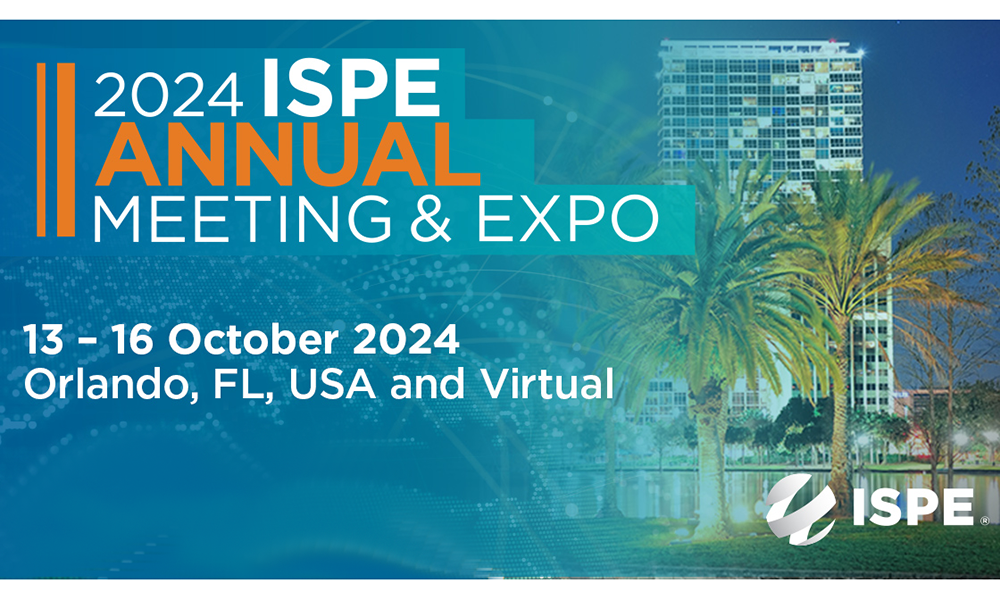Empowering Novel Therapies: Automation Best Practices for cGMP Processes

Novel therapies refer to innovative and often groundbreaking approaches to treating medical conditions. These therapies typically involve new modalities aiming to improve upon existing treatments or to provide entirely new options for patients. The development of novel therapies is not immune to the challenges of standard therapeutic pursuits; however, the use of automation can significantly improve efficiency, reproducibility, and data quality. These automation practices are often found in single and multi-use facilities, lab-style gene therapy projects, oligonucleotide facilities, and many more.
Many novel therapies are classified as personalized medicine. Those that aren't still target small patient populations and therefore batch sizes are small, compared to traditional therapies such as orals, biologics, and vaccines. Therefore, the manufacture of novel therapies is more suited for disposable processing technologies, e.g. single-use technologies. These facilities require water for injection (WFI) to formulate media and buffers used in processing. WFI can either be outsourced and delivered in disposable bags, or more typically, generated on site and distributed throughout the facility via a stainless steel storage tank and piping system.
Often these single-use processes are run manually or semi-automated where the WFI use-point valves can be manually operated at any time. Water that tends to be upstream close to the WFI distribution pumps can dispense at high flows and pressures causing bag failure. Automation departments that are comfortable with traditional WFI arbitration techniques in stainless facilities are adopting the use of manual safety stroke limitation valves to mitigate these risks during WFI use. The manual operator can only open the valve when air is applied, and the air can only be applied to the valve by requesting it from the WFI control system. The valve’s “open” state is transmitted via a limit switch, thereby preventing the valve from being operated during an inappropriate stage in the process.
Another risk mitigation strategy is potentiometers coupled with traditional air-operated valves with positioners. A potentiometer acts as a dial which gives an operator control over opening by throttling the dial as required, akin to adjusting a manual speed dial on a single-use mixer agitator. Software programming can be used to mimic equal-percent or slow-opening type curves to give operators further control. The positioner is used to pressurize and vent the actuator as required, and the control system can lock-out the use of the valve as required.
Lastly, innovative instrument and valve vendors are developing pressure-independent single-use mass flow control for WFI use-points and other filling/weighing applications. This benefits users by giving the mass measurement of scales with the ease of installation, maintenance and flexibility associated with through-air radars. Preliminary design has shown that there are square-footage savings from elimination of scales and hold bags in clean rooms, as well as many other applications for this technology aside from WFI.
In addition to incorporating automation to mitigate WFI risks and potential for error, more and more facilities are foregoing the standard process control systems (PCS) and only using operations technology (OT) networks. Utility distribution systems that are traditionally PCS operated become islands of automation. OT networks can be strategically designed using the most appropriate servers and software packages to support data tracking and visualization from these islands. Designing OT networks this way can provide cost savings and support greater future adaptability. These networks rely heavily on the use of OPC unified architecture (UA)-enabled technology. As messaging protocol used for machine-to-machine communication (MQTT) and unified name space (UNS) become more prevalent, single-use facilities will have options to further their flexibility and agility while keeping upfront costs down. For example, a facility may only need an environmental monitoring system (EMS) and an OT network to cover all basis. An EMS that does only monitoring is easier to follow with GAMP® 5 lifecycle documentation and guidelines than with an equivalent control system which includes utilities. A wireless EMS with vendor-provided supervisory control and data acquisition (SCADA), GAMP documentation, and 21CFR Part 11 compliance would even further simplify this architecture and decrease the reliance on a traditional systems integrator.
Continuing the topic of personalized medicine, some cell and gene therapy facilities represent traditional labs at a manufacturing scale, under the guidance of regulations established for manufacturers. Process automation in cell and gene therapy (CGT) on these types of projects is an art. These facilities require large-volume freezers, refrigerators, incubators, fume hoods, and biosafety cabinets. Temperature, CO2, moisture levels, and sometimes shaker speeds are continuously monitored either via the equipment or using third-party probes to historize critical environmental conditions. Typically, these probes require quick connect wall plates which lend themselves for the use of IO-Link. IO-Link is particularly useful in plug-and-play applications with portable equipment. Many CGT projects are adopting modular cleanrooms, and low-voltage raceways are only available in the wall panel seams. The wall plate solutions are particularly good for coordination with the modular clean room panels and the clean room equipment. In LN2 freezers, specific class resistance temperature detector (RTD) probes need to be used to provide accurate readings for cryogenic temperatures. Probe installations in refrigerators and freezers tend to be done via access ports or by drilling a hole through access port stoppers to ensure a good seal around the probe (e.g., RTD cables). Refrigerators and freezers should be mapped and probed to measure the warm spots. Relying solely on the equipment’s environmental monitoring outputs is typically not advised as these systems are often placed to optimize control of the refrigeration (or other) cycle rather than to monitor for specific hotspots.
CGT facilities rely on a robust building automation system (BAS) to monitor and regulate air handlers, boilers, chillers, and cooling towers to establish a controlled environment. A secondary, cGMP, EMS is usually deployed to monitor the environmental parameters and data. The advantages of having both a BAS and EMS are that it allows the BAS to remain non-GMP, whilst benefiting from the greater data integrity of the EMS. In some facilities, a wireless EMS that can support temperature, pressure, humidity, and CO2 controls within a cleanroom environment has benefits over the traditional hardwired EMS. Between an EMS and BAS, there are typically redundant room temperature and humidity sensors. This can be mitigated using cross-platform communications via OPC-UA or UNS, which can eliminate the redundant sensors in both systems. The EMS would include protocols tested during validation to confirm that the BAS cannot write to the EMS to ensure data integrity.
Automation also plays a critical role in the process of establishing cleanroom environments. The ASHRAE Guideline 36 is a high-performance sequence of operations used to standardize heating, ventilation, and air conditioning (HVAC) control sequences. It operates on the concept that “less is more” and allows engineers to reduce engineering time by leveraging standard sequences that have already been proven to perform. This type of process automation results in shorter programming times and commissioning times for contractors. The ASHRAE Guideline 36 also reduces energy consumption, costs, and system downtime. Smart analytics platforms that leverage ASHRAE 36 installations are available in multiple forms, including cloud-based solutions. These analytics can inform operators of system performance, identify downtime errors, create work orders, and more.
Oligonucleotide facilities are designed using Class I Division 2 and Class I Division 1 instrumentation due to the types of chemicals in use. The two main types of instrumentation for Class I Division 1 are explosion-proof and intrinsically safe (IS) instrumentation. Clients tend to use explosion-proof equipment for ease of installation and lower engineering costs, often to the detriment of maintenance and maintainability. Intrinsically safe instrumentation has a higher upfront capital cost, but it also has many advantages over explosion-proof instrumentation. Most intrinsically safe equipment has a smaller footprint compared to explosion-proof equipment. For example, the footprint for an intrinsically safe switch can be three inches smaller when compared to some explosion-proof switches. Intrinsically safe instrumentation also eliminates the need for conduits and guards on quick disconnects, which makes it easier to perform regular maintenance on the system without the added cost of removing and replacing the conduits and seals. Guards are typically associated with nonincendive (NI) Div 2 installations to prevent arcing. One disadvantage of IS instrumentation compared to NI instrumentation is the limited availability of equipment on the market with an IS certification. Even though the upfront cost of using intrinsically safe instrumentation is higher than the cost of using explosion-proof counterparts, the cost of maintenance is lower, and the longevity of the system is greatly increased.
In another example of novel therapies, plasmid manufacturing, and blood fractionation both use salty buffers. Salty buffers are used to preserve cellular components, such as nucleic acid backbones in DNA/RNA during these processes. These salts can lead to corrosion. In one example, if tanks are not drained and dried properly, evaporating water droplets can concentrate corrosive salts. To combat this, tanks are often built using exotic alloys, such as AL6XN or Hastelloy, which have a higher corrosion resistance. Electropolishing of stainless steels is a common practice to maintain tank cleanliness, however this can lead to rouging or discoloration on exotic alloys and, in some unique cases, can raise the surface finish of the metal. Electropolishing exotic alloys also creates added costs and requires unique part numbers for many instrumentation suppliers.
Multi-use facilities can also benefit from smart instrumentation. Smart instrumentation can be used to identify when maintenance is required – before more costly measures are needed. A smart analytical probe can constantly record data and communicate status utilizing digital protocols made even more powerful by Ethernet/IP connections. Probe data is used to verify its own lifetime and can be leveraged to inform calibrations at an optimal schedule or drive SOPs for probe change out. These changeouts and calibrations are typically at a decreased frequency than without the analytics. The data can also be used to verify probe health for the duration of a batch or continuous production. We have seen an increased use of smart level instrumentation to verify health and calibration on through-air and guided wave radars in tanks until it is necessary to change them out (think – these could end up being left indefinitely in an area with tight head space) and smart flowmeters to verify calibrations were not required before or during long batches or continuous runs. It is up to the individual facility to use this data to help refine its maintenance process.
RFID technology is another tool that has had a significant impact on continuous and batch processes. RFID technology can be used to transmit additional batch information. For example, in a multi-column chromatography application, it can record which columns are utilized for which skid. We have seen RFID embedded into plastic tubing bundles that are autoclavable, allowing us to use them to prove transfer panel connections and record the number of sterilizations and uses until it is time to throw the tube set out.
These are just a few examples of the automation practices companies are leveraging to pursue novel therapy projects. Through the intelligent application of targeted automation – from data collection, monitoring, and response to the efficient pre-construction design of highly effective facilities.
Disclaimer:
iSpeak Blog posts provide an opportunity for the dissemination of ideas and opinions on topics impacting the pharmaceutical industry. Ideas and opinions expressed in iSpeak Blog posts are those of the author(s) and publication thereof does not imply endorsement by ISPE.



